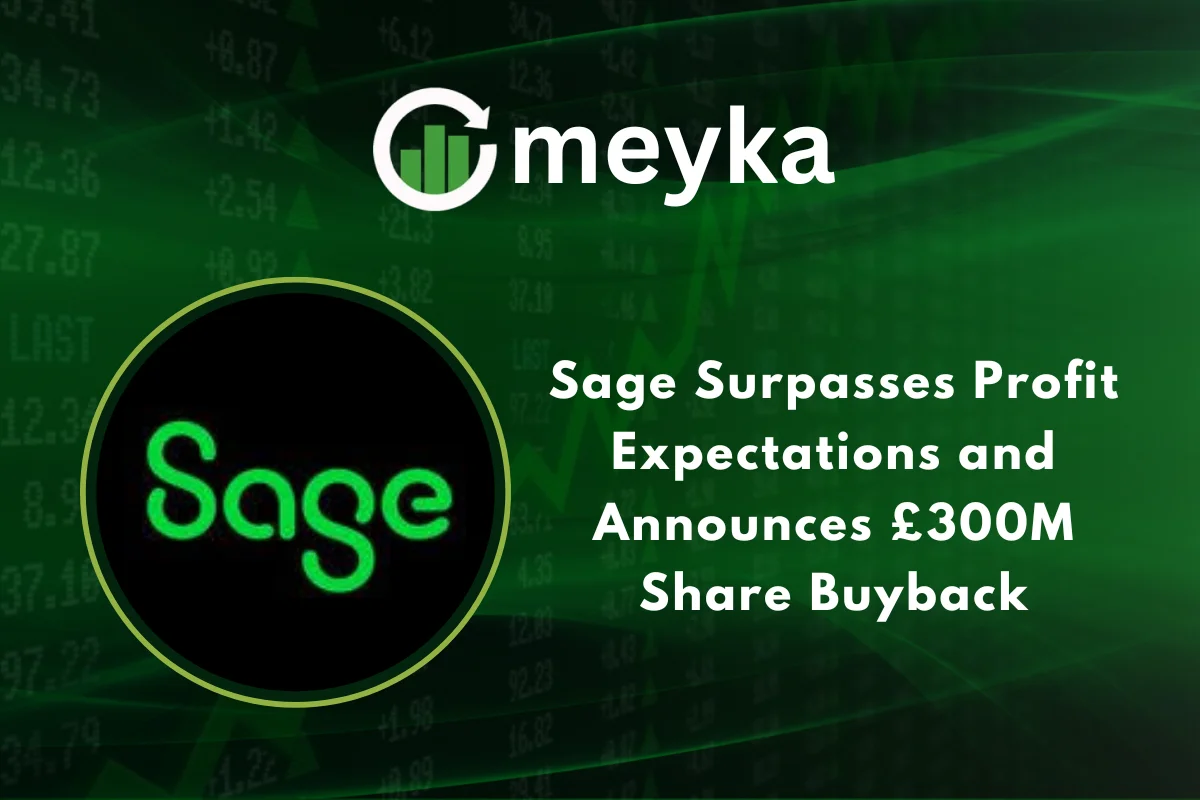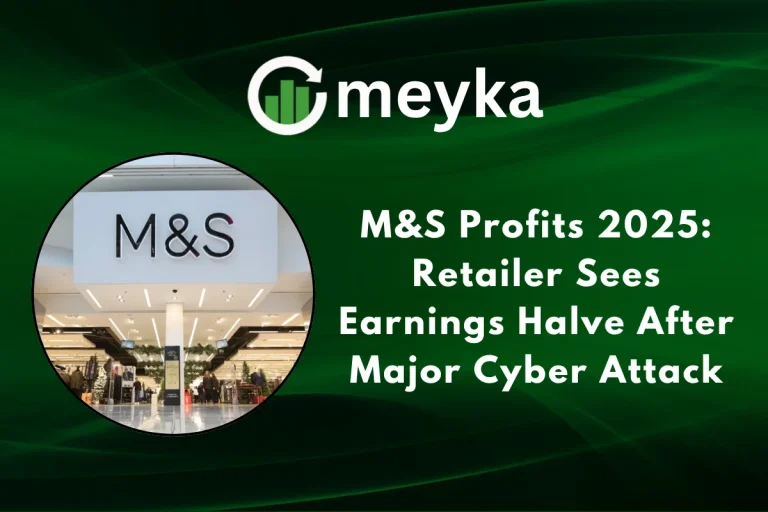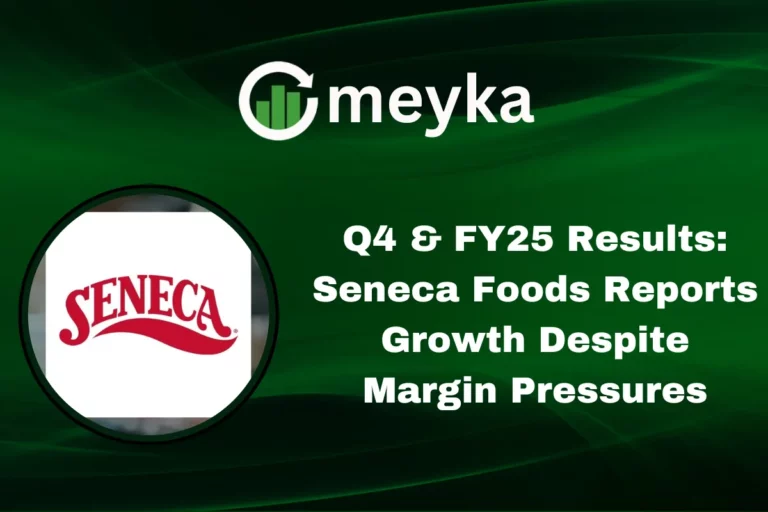Sage Surpasses Profit Expectations and Announces £300M Share Buyback
Sage, the UK-based software company best known for its accounting, payroll, and HR solutions, recently delivered strong financial results, outperforming profit expectations. Alongside the positive earnings news, Sage also announced a £300 million share buyback, signaling the board’s confidence in the company’s future and its commitment to returning value to shareholders.
Sage’s Strong Financial Performance
In its half-year results (for the six months ended March 31, 2025), Sage reported underlying total revenue of £1,242 million, a 9% year-on-year increase. Underlying operating profit rose by 16% to £288 million, improving its operating margin meaningfully. Earnings per share also grew, underlying basic EPS jumped by 17% to 20.8p. These results reflect Sage’s consistent subscription-based business model, which gives it recurring revenue, stability, and predictable cash flow.
Sage’s cash position remains strong, with £1.2 billion in liquidity and a net debt-to-underlying EBITDA ratio of 1.5×, giving the company flexibility in capital allocation. This financial strength underpins Sage’s decision to return capital to shareholders aggressively.
Breakdown of the £300M Share Buyback
Sage has committed £300 million to repurchase its own shares, signaling confidence from its leadership. Specifically:
- As of March 31, 2025, Sage had bought back 23.6 million ordinary shares for a total of £300 million, with nearly all payments completed.
- The buyback is part of a larger £400 million repurchase programme, originally announced in late 2024.
- The board says the buyback reflects strong cash flow generation, a robust financial structure, and its belief in Sage’s long-term business model.
This share repurchase benefits existing shareholders by reducing the number of outstanding shares, potentially boosting earnings per share and supporting the stock price.
Strategic Drivers Behind Sage’s Performance
1. Cloud & Recurring Revenue Business Model
Sage’s business cloud revenue continues to grow. In the half-year, subscription penetration reached 83%, highlighting how deeply customers are embracing Sage’s recurring model. This shift is critical, as predictable fees from cloud subscriptions lower risk and support stable earnings.
2. AI Innovation: Sage Copilot
Sage is investing in AI in a meaningful way. CEO Steve Hare noted that Sage Copilot, a generative AI assistant, is delivering productivity gains and data insights to thousands of users. This suggests the company sees AI not just as a nice-to-have, but as a core part of its future growth strategy.
3. Operating Efficiency & Margin Expansion
Sage’s operating margin has expanded, thanks to disciplined cost management. The 16% increase in underlying operating profit shows that the company is not only growing revenue, but doing so profitably.
4. Strong Cash Flow
High cash conversion (115% in the first half) gives Sage freedom to invest in innovation, repay debt, and return capital to shareholders. The strong liquidity position makes the current buyback possible without jeopardizing financial flexibility.
Market and Investor Implications
For investors doing stock research on Sage, these developments carry several key implications.
- Shareholder Confidence: The £300M buyback shows that Sage’s board believes its shares are undervalued or that reinvesting in its own stock is a wise use of capital.
- Long-term Value: With stable recurring revenue and strong cash flow, Sage is well-positioned for long-term growth, even in uncertain economic conditions.
- AI Potential: As Sage rolls out Copilot, its AI-driven business could appeal to both customers and investors interested in the intersection of technology and productivity. That could help Sage compete with other AI stocks or in the broader tech space.
- Risk Profile: While encouraging, the buyback also raises questions. For example, can Sage maintain high growth and cash generation in a volatile macro environment? Will it invest enough in innovation while returning capital?
Challenges and Risks
That said, Sage is not without risks:
- Macro Uncertainty
The global economy remains uncertain. If small and medium-sized businesses (SMBs), a core customer base, cut back on spending, Sage could face slower-than-expected growth. - Competition
Sage competes with other cloud-based and AI-enabled software companies. Better execution or more aggressive innovation from rivals could pressure its market share. - Overreliance on Recurring Revenue
While recurring revenue is a strength, a slowdown in customer renewals or lower subscription growth could hurt performance. - Execution Risk for AI
Sage’s long-term ambitions with Sage Copilot depend on successful execution. If adoption is slower than expected, or if AI investments don’t drive meaningful profit, the upside could be limited.
Why This Matters for the Tech & Stock Market
Sage’s latest earnings and buyback are a strong signal in a few ways:
- Declaring Confidence: A large buyback often means the board sees value in the company’s current share price and wants to reward shareholders.
- Validating SME Software: Many small and mid-sized businesses (SMBs) rely on Sage’s tools. Sage’s performance shows that software specifically designed for SMBs is still a powerful and growing market.
- AI-Driven Growth: By pushing Sage Copilot, Sage is leaning into AI not just for novelty, but to reshape how customers do accounting and manage financial workflows. This could make it appealing in a broader tech-stock universe.
- Capital Efficiency: Managing a strong recurring business and generating cash gives Sage flexibility to invest, return cash, or both.
Conclusion
Sage has clearly outperformed expectations with its recent financial results. With strong recurring revenue growth, widening margins, and robust cash flow, the company is not resting on its past success. The £300 million share buyback underlines Sage’s belief in its own path forward and demonstrates its commitment to shareholder value.
For investors doing stock market research on tech companies, Sage presents a compelling mix: reliable earnings, capital return, and AI-driven innovation. While risks remain, the company’s results show it has both the momentum and the financial strength to deliver long-term value.
FAQs
Sage is returning capital to shareholders because it has strong cash generation, confidence in its growth, and a solid financial position. The buyback reduces the number of outstanding shares, which can enhance earnings per share.
Sage is scaling Sage Copilot, a generative AI tool for accounting and finance workflows. This investment shows that Sage sees AI as a core part of its business and future growth.
Key risks include economic uncertainty affecting SMB customers, strong competition in cloud software, and the challenge of scaling its AI-driven offerings profitably.
Disclaimer:
The content shared by Meyka AI PTY LTD is solely for research and informational purposes. Meyka is not a financial advisory service, and the information provided should not be considered investment or trading advice.






